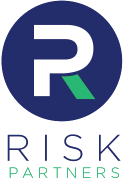
The insurance industry came in to COVID-19 from a strong financial place, despite the start of a hardening market. However, the insurance industry was struggling to keep up with loss trends before the impacts if COVID-19 became a factor.
In the world of commercial insurance, our customers are struggling as severe claims are popping up everywhere. Premiums costs continue to grow as insurers are losing money. All of this combined means less capacity and higher pricing – a hardening insurance market.
Around the globe, seven pandemics in the last 18 years have generated multi-billion-dollar economic losses. As shown below, COVID-19 is expected to generate losses 37x greater than the first six pandemics combined.

The following state of the insurance industry report will explain the market conditions that are collectively accumulating toward these unprecedented results.
Property & Casualty Insurance
The International Monetary Fund (IMF) expected economic losses from COVID-19 to reach $9 trillion in 2020, and expect that we’ll still be feeling the effects for the next 30 years. Losses are expected to be so deep and wide for the insurance industry that companies across the globe will likely have difficulty diversifying toward a strong recovery. There will be unusual circumstances unique to the pandemic-related claims:
- Difficulty determining what type of claims are covered by workers compensations; more specifically, who is considered an essential worker.
- Increased lawsuits against insurers; largely associated with business interruption, but also general liability.
- Greater losses in the mortgage industry as homeowners experience ongoing difficulty to make payments.
Catastrophe (CAT) Losses
Though CAT losses have been increasing by roughly $10 billion each decade since 1990, it would have appeared that rates were stabilizing from 2018 to 2019. Then COVID-19 showed up to set new precedents for the 2020 decade. It is almost impossible to predict how the pandemic and CAT losses will impact rates from here.
Investment performance
Investment income, which is an industry indicator for personal and commercial insurer profitability, has been low the past ten years due to low interest rates. The investment yield had already slid back to three percent and has been falling continuously ever since. The industry hasn’t experienced these numbers since 1961. Now COVID-19-related federal interest rate cuts will drive investment income down further.
Reinsurance Market
Reinsurers are trying to manage global aggregation risk and answer to the capital markets that fund them. Regardless, there will be major and rapid changes in this market:
- Property – As primary commercial and personal insurers are facing non-approvals for all communicable disease exclusions (not just pandemic or epidemic) from state insurance departments, reinsurers are excluding communicable disease in nearly all treaties.
- Casualty – In the London market, some reinsurers are starting to exclude communicable diseases relative to general liability/workers compensation, especially catastrophe.
Financial Markets
The COVID-19 pandemic will directly and severely impact economic growth. The strength of the economy has always influenced growth in insurer’s exposure base across most lines. As the economy slows, demand for insurance will be impacted.
Labor Markets
It wasn’t the coronavirus that killed the economy but the mandatory closing of businesses. Shutdowns pushed unemployment up to 14.7 percent in April before improving in May, June, and July. Only 40 percent of jobs loss have been restored thus far.
Not since the Great Depression has the labor market been impacted at this level. The length of the long-term effects will be determined by the legislative, regulatory and tort environments.
Commercial Lines
Commercial insurance price increases are occurring across most major coverages around the world due to a combination of factors:
- Commercial lines growth
- Poor underwriting performance
- Pricing cyclicality
- High CAT losses
These are the largest sustained increases seen since 2003.

Other notable outcomes:
- Umbrella rates now lead all major commercial lines in terms of gains, exceeding auto and property (which typically lead the way).
- Reduced driving will artificially decrease rates.
- Thousands of business property and business interruption claims have been submitted due to the coronavirus, but to no avail as insurance companies deny on the basis of “no physical damage to business property.” States are trying to enforce insurance companies to cover the claims, but the efforts are futile.
Summary & Conclusions
Exclusions to communicable disease are helping the personal and commercial insurance industry remain strong, including the reinsurance market. However, the rapid economic slowdown will hamper personal and commercial insurance growth, especially in workers compensation and other economically-sensitive lines. In addition, low interest rates will have a bearing on investment earnings for an unforeseeable time frame.

The large losses across many lines are undeniable, and while we cannot spread risk, products can and are continuing to be developed.
If you are seeking insight and support for your insurance needs, please contact us. Our team is here to help you through this confusing and challenging time.
You can also subscribe to The Morning Brake, for once- or twice-weekly e-news from us, the fleet and automotive industries, and more.
